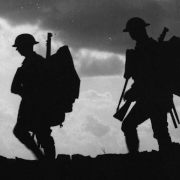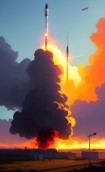|
Dark Helmut posted:Would they remove the Gau-8? That would be depressing. I think the last time this got brought up someone mentioned little life rafts rolled up into 30mm casings
|
|
|
|

|
| # ? May 27, 2024 06:39 |
|
Snowdens Secret posted:I think the last time this got brought up someone mentioned little life rafts rolled up into 30mm casings Be awesome if they ever responded to a sinking ship full of guinea pigs.
|
|
|
|
Cyrano4747 posted:Hah, station a squadron of A-10s in florida for drug interdiction. less GAU more GBU 
|
|
|
|
MrYenko posted:Be awesome if they ever responded to a sinking ship full of guinea pigs. I would make that happen. 
|
|
|
|
Reminds me of this: That yellow thing slung under the fuselage is a droppable life boat.  Now, logically I know that they must have done something like get low to the water, slow to just above stall speed, and drop it a couple dozen yards away from whoever needed a delivery-style lifeboat. That just makes sense. That doesn't keep the 10 year old in me from imagining 200 of those in formation 15,000 feet over a sinking ship with a coastguardsman staring down the lead Norden.
|
|
|
|
The 10 year old in me agrees. "Catastrophic consequences" await the Bulgarian armed forces if they are not weaned soon from dependence on old Russian equipment and repairs, according to outgoing Defence Minister Velizar Shalamanov.
|
|
|
|
To be honest they probably have a point. I don't think Russian engines are rated for anywhere near the hours that US/Euro military jets are.
|
|
|
|
Took a while, but here's the next post about the JA 37. For the record, JAS and aircraft 39 refer to the Gripen. Previous parts: Part 1 Part 2 There's still more to go.  Bonus content: Article in an issue of Ericsson Review from 1983, about the JA 37's radar. Tons of nerdy stuff, very interesting. quote:Moderator: Well, we've talked about the system, but I was thinking we should focus a bit. We've already talked a bit about user interfaces, but maybe there are more things about the machine end of things that we'll want to cover? TheFluff fucked around with this message at 00:11 on Oct 15, 2014 |
|
|
|
C27J Chat: one just buzzed the gently caress out of my house flying like it was stolen. Came straight at me while I was on my front porch, time I ran around to the back it was completely gone over the horizon without so much as engine noise.
|
|
|
|
Sperglord Actual posted:The 10 year old in me agrees. So if I read this as "never trust Russia for anything, as when you displease them they will try to dick you over and start running puppet parties in your national elections" would I be wrong?
|
|
|
|
Sperglord Actual posted:"Catastrophic consequences" await the Bulgarian armed forces if they are not weaned soon from dependence on old Russian equipment and repairs, according to outgoing Defence Minister Velizar Shalamanov. Buying used Eurofighters from Portugal would be a bit of a feat given that I'm pretty sure Portugal doesn't have any.
|
|
|
|
Nebakenezzer posted:So if I read this as "never trust Russia for anything, as when you displease them they will try to dick you over and start running puppet parties in your national elections" would I be wrong? It's not as huge a problem as you think. There's plenty of expertise in that equipment in both Israel and other countries in E. Europe.
|
|
|
|
TheFluff posted:Took a while, but here's the next post about the JA 37. For the record, JAS and aircraft 39 refer to the Gripen. Still enjoying these, thanks!
|
|
|
|
Panzeh posted:It's not as huge a problem as you think. There's plenty of expertise in that equipment in both Israel and other countries in E. Europe. Expertise is one thing, spare part supply is another. Also despite the twist of the article the implication is less that having a military full of Soviet gear is bad because you're dependent on the Rus for support, and more because it means your newest gear is pushing 25 years old and the median age is probably a lot higher. Their newest fighters, for instance, are Fulcrum-As with questionable modernization status, and theoretically they're still flying MiG-21s, which just doesn't cut it in a European context.
|
|
|
|
Regarding the B-52 engine replacement talk, aren't there enough spare JT3's to outlast all the current airframes available?
|
|
|
|
This isn't exactly in line with the thread, but this has become three closest thing we have within tfr to mil-news. C.J. Chivers just published an article in the nyt about the DOD's awful handling of pre-1991 chemical munitions found during OIF, secrecy to the point of getting more service members hurt, and improper treatment of nerve and mustard injuries. It's long, but absolutely worth it. The idiocy of being wrong about a current wmd program combined with a refusal to acknowledge that troops were getting hurt by stuff the west helped build in the eighties is just too much. http://nyti.ms/1xQACMG
|
|
|
|
Blistex posted:Regarding the B-52 engine replacement talk, aren't there enough spare JT3's to outlast all the current airframes available? About 2,000 or so, yes.
|
|
|
|
Blistex posted:Regarding the B-52 engine replacement talk, aren't there enough spare JT3's to outlast all the current airframes available? The AF calls it TF33, but yeah that's what started the conversation. Edit: drat you
|
|
|
|
Dead Reckoning posted:About 2,000 or so, yes. That's enough to completely re-engine every B-52 about 3 times.  Yeah, I can see why nobody would bother replacing it.
|
|
|
|
Mortabis posted:That's enough to completely re-engine every B-52 about 3 times. The TF33s also engine about 100 other planes (JSTARS, E-3 Sentry, E-6) but yeah, they bought out more than 60% of the TF-33's total production run. Heck, back in '97 they had 3600 engines left. Now they have around 2,300 at last public count. edit Lockheed claims they made fusion reactors  quote:Lockheed Martin Corp said on Wednesday it had made a technological breakthrough in developing a power source based on nuclear fusion, and the first reactors, small enough to fit on the back of a truck, could be ready for use in a decade. Party Plane Jones fucked around with this message at 20:41 on Oct 15, 2014 |
|
|
|
I don't believe anything Lockheed is selling at this point.
|
|
|
|
"We're totally going to invent nuclear fusion that you can haul around in the back of a F250. All we need is a decade and a bunch of government and military money. There is no way this will go over time or over budget. See we have all this secret research done that we can't show you, we're like 90% there, honest. Really we're just working out the final details, deciding what color to paint it practically. This will also solve all your environmental, military budget, and naval construction problems. We're pretty sure it is positively buoyant and heals the sick as well, but we're waiting for the data on that. Also, the first 250 units come with a pony. A unicorn pony. That's pink. Her name is Fluttershine."
|
|
|
|
Nuclear fusion itself isn't actually that hard, relatively. The problem (or, really, a problem--there are others) is nuclear fusion that produces net energy. There are plenty of fusion reactors out there, but confining the fuel takes more power than it generates.
|
|
|
|
Mortabis posted:Nuclear fusion itself isn't actually that hard, relatively. The problem (or, really, a problem--there are others) is nuclear fusion that produces net energy. There are plenty of fusion reactors out there, but confining the fuel takes more power than it generates. Presumably, lockmart is not bragging about fusion power that requires external power to work. But they could always just be lying.
|
|
|
|
Mortabis posted:Nuclear fusion itself isn't actually that hard, relatively. The problem (or, really, a problem--there are others) is nuclear fusion that produces net energy. There are plenty of fusion reactors out there, but confining the fuel takes more power than it generates. Fine, I should have specified "net energy positive nuclear fusion" but that didn't fit with my artistic vision in end-of-the-day mockery. Either way that little "detail" is a pretty loving profound leap to promise on a fixed timetable if only someone would just uncork that sweet, sweet government money hose. I mean, essentially infinite, cheap energy offering a way for us to fix major long term environmental, economic, industrial, and social problems? A promised future where we don't really have to worry about nasty things like curtailing our energy consumption and can keep on keeping on with making our society as luxurious as possible with no repercussions? Yeah, obviously no one else has bothered to put a poo poo load of effort into trying to solve that one. I mean, riches and wealth beyond all possible dreams and avarice plus universal fame and adoration would be the only rewards. I'm certain no corporation has given this a hard shot, and god knows there aren't any research scientists interested in the sort of project that would more or less guarantee a Nobel if they pulled it off. But look, just make that check payable to "Lockheed Martin" and give us a decade. We'll get that little item checked off lickety split.
|
|
|
|
X-15 Development: "Research Project X-15" 1966 NASA Hypersonic Spaceplane https://www.youtube.com/watch?v=?kBbZqeiU10s (Youtube thumbnail is not working for me, so here's a link A still from the video were they show the analog computer used on the simulator. 
Micr0chiP fucked around with this message at 21:17 on Oct 15, 2014 |
|
|
|
We've actually achieved break-even fusion, where the fusing fuel released more energy than the lasers put into it. Unfortunately, we still have to get a reaction that produces more energy than we have to put into the lasers, but with time and money, it's possible. Probably not with LockMart, though.
|
|
|
|
Yeah, I don't want it to seem like I'm against funding core scientific research or anything. Quite the opposite. I just can't help but roll my eyes, hard, when LockMart promises the holy grail of energy research on a fixed timetable.
|
|
|
|
Cyrano4747 posted:"We're totally going to invent nuclear fusion that you can haul around in the back of a F250. All we need is a decade and a bunch of government and military money. Looking forward to fusion powered F-35s.
|
|
|
|
Lobster God posted:Looking forward to fusion powered F-35s. It's what we're going to power the laser with, silly!
|
|
|
|
darthbob88 posted:We've actually achieved break-even fusion, where the fusing fuel released more energy than the lasers put into it. Unfortunately, we still have to get a reaction that produces more energy than we have to put into the lasers, but with time and money, it's possible. Probably not with LockMart, though. NIF is a dead-end from any perspective other than as a nuclear weapons simulator.
|
|
|
|
Cyrano4747 posted:I just can't help but roll my eyes, hard, when LockMart promises the holy grail of energy research on a fixed timetable. "If only five-hundred and thirty-five or so idiots with lots of money and zero functional accountability would help us out a little, we could change the world!"
|
|
|
|
Cyrano4747 posted:Fine, I should have specified "net energy positive nuclear fusion" but that didn't fit with my artistic vision in end-of-the-day mockery. I suspected that's what you meant, but the pedant in me couldn't let it go. quote:I mean, essentially infinite, cheap energy offering a way for us to fix major long term environmental, economic, industrial, and social problems? A promised future where we don't really have to worry about nasty things like curtailing our energy consumption and can keep on keeping on with making our society as luxurious as possible with no repercussions? I'm somewhat skeptical about the cleanliness part. Fusion reactions release shitloads of neutrons, so the reactors do produce a fair amount of radioactive waste, depending on what fuel you use. Anyway if LM is really that close to practical fusion power it should be able to get private funding. Mortabis fucked around with this message at 21:44 on Oct 15, 2014 |
|
|
|
"Shitloads of neutrons" is a very short term and essentially solved problem.
|
|
|
|
Snowdens Secret posted:"Shitloads of neutrons" is a very short term and essentially solved problem. My god no it isnt what the hell
|
|
|
|
Someone at LockMart watched "The Saint" and decided Tretiak had a really good idea.
|
|
|
|
Party Plane Jones posted:The TF33s also engine about 100 other planes (JSTARS, E-3 Sentry, E-6) but yeah, they bought out more than 60% of the TF-33's total production run. Heck, back in '97 they had 3600 engines left. Now they have around 2,300 at last public count. I'm trying to be skeptical,but if anyone on earth could pull this off its skunkworks. I hope it is because it might save all our butts.
|
|
|
|
Groda posted:My god no it isnt what the hell When people think 'radiation' and 'radioactive waste' in terms of nuclear plants they're generally thinking of the results of the decay chains of the fission products and fuel leftovers. They're not thinking of the neutrons released during power-operation fission, which are zipping around for a trivially small amount of time after release compared to the eons-scale of those chains, and dealing with those in that short timeframe is a question of space, not tech. Reading that LockMart talk, they're reflecting them back into the reaction chamber. I know you know all this stuff, Groda, and you know why I'm not getting into detail. But I've worked, eaten, slept and lived for years within mere meters of a fission reactor at power, making GBS threads out its poo poo tons of neutrons, and I find it unconcerning. Also reading up online it sounds more clearly like when LockMart talks about fitting on the back of a truck they're talking about the reaction chamber / reactor core itself, certainly not the entire steam side and probably not even most or all of the containment. That likely means the size and the other numbers they give are all in the ballpark of the latest batch of self-contained fission units like the Toshiba 4S. The most shocking thing about that announcement was the implication they'd shrunk the generation and support aspects down to fit on a truck with the core, which would've been very hard to believe if it involved spinning turbogenerator sets.
|
|
|
|
So you don't think the people who created nuclear fission reactors 70 years ago (physicists working in universities) could create nuclear fusion reactors, but the people who put the wings from a sail plane on a starfighter 60 years ago (engineers working at lockheed) could? I do not agree.
|
|
|
|

|
| # ? May 27, 2024 06:39 |
|
In other Cold War news, it turns out convicted Soviet spy David Greenglass died back in July.
|
|
|





































